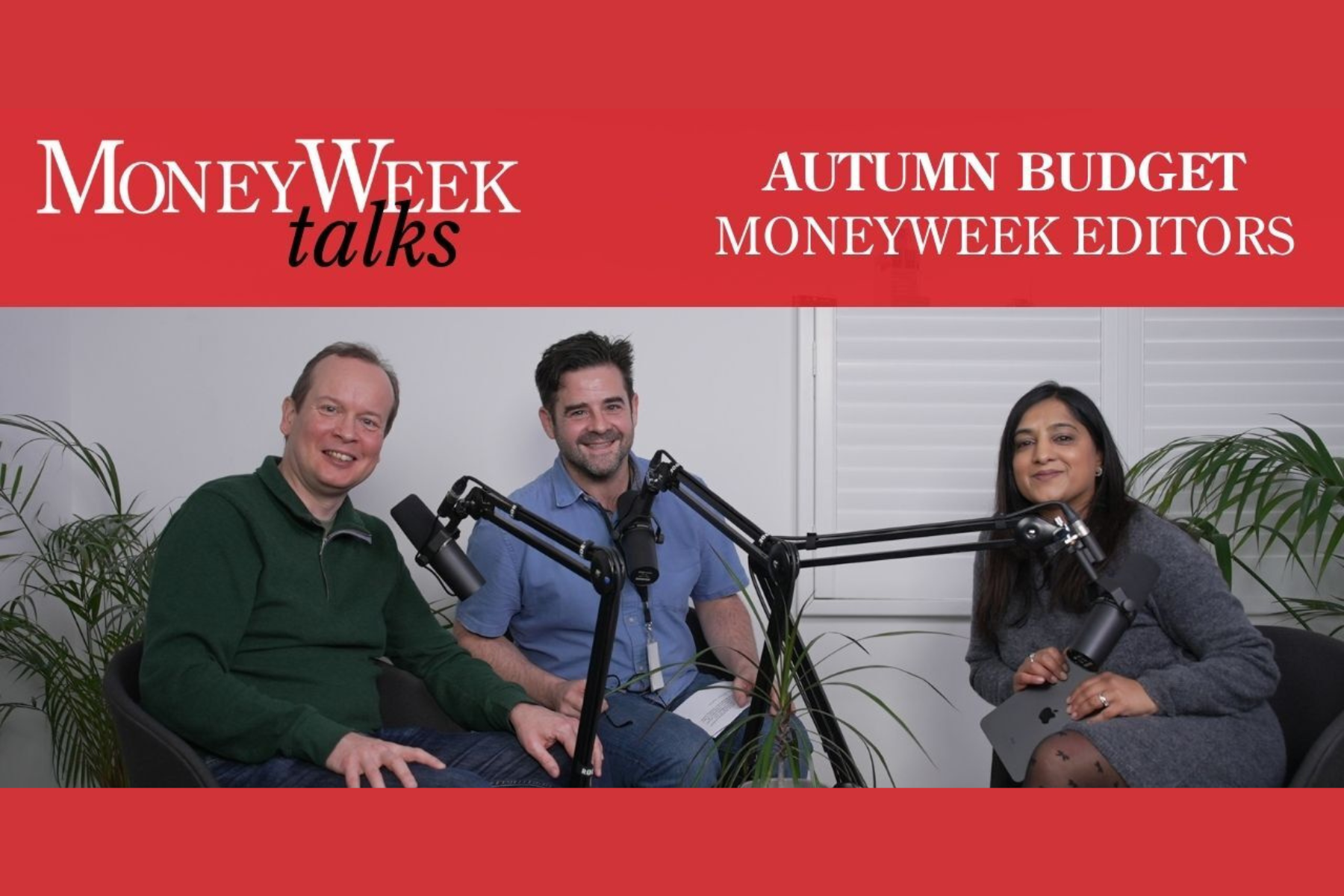Why low market volatility isn't such good news
It might seem counter-intuitive for a traditional stockbroking firm to argue in favour of increased volatility, but Jeremy Batstone of Charles Stanley thinks it would be good for everyone over the medium-term.
It may seem oddly counter-intuitive for a traditional stockbroking firm to argue in favour of increased volatility but that is what this writer thinks would be good for everybody over the medium-term. The result of ultra-low volatility has been to encourage investors' to consign risk to the dustbin of history. Risk assets are "in" government bonds are most definitely "out" and in the credit market investment grade and high yielding corporate bonds alike trade at near record low spreads to government bonds. In the equity market investment strategists worry about rising multiples. Share prices are rising but earnings expectations are slowing. Superannuated hedge fund managers can still charge exorbitant fees for generally only modest performance and splash their arriviste wealth on such decorative baubles as Gustav Klimt's "Adele Bloch-Bauer" ($135m is a lot to pay for a Christmas present!) or $917,000 for that little black dress worn by Audrey Hepburn in "Breakfast at Tiffany's". In a world of frantically inflated values what does "normal" mean any more?
Volatility trades were particularly profitable in 2006
Some investors might read this, roll over and go back to sleep. 2006 ultimately proved to be quite a good year notwithstanding the mid-year shake-out. Total returns made it into double digits, currency markets behaved themselves, the global economy performed strongly and in a more balanced fashion than at any time in the past fifteen years, whilst central bankers moved (and are continuing to move) concertedly to snuff out incipient inflationary pressure. Bids and deals kept on rolling in, ensuring that even if your investments weren't the subject of an actual approach they were almost certainly the subject of rumoured interest from a private equity or hedge fund sector awash with cash, if not from industry itself.
So pity the poor hedge fund manager. Goldman Sachs calculates that approximately 85% of long-only portfolio managers underperformed their benchmarks while leveraged funds were only able to achieve mid-single digit returns! The only hedge fund strategy to make serious money over 2006 was selling volatility. According to the VIX volatility index (see page 5) 2006 ended with volatility down to 20-year lows. The problem was, however, that with so few strategies making any money those desperate to generate pure alpha became huddled together in a very small space, reducing returns for everybody.
MoneyWeek
Subscribe to MoneyWeek today and get your first six magazine issues absolutely FREE

Sign up to Money Morning
Don't miss the latest investment and personal finances news, market analysis, plus money-saving tips with our free twice-daily newsletter
Don't miss the latest investment and personal finances news, market analysis, plus money-saving tips with our free twice-daily newsletter
The best long-only strategy, to buy and hold basic resources and energy stocks has paid off handsomely over the past three years, however, the returns from this strategy have been dwarfed by the volatility trade. We may well be in the midst of a long-term cyclical upswing in these commodity and energy-related sectors at present and there may be more mileage over the longer term for those investors eager to embrace a further year's balanced global economic growth. What we are less sure about is the scope for further volatility-related short selling. An optimism based on hope, tempered by a pessimism based on experience, has not made for a comfortable new year's baptism.
What low volatility means for markets
"The only thing we have to fear is fear itself". So said Franklin D Roosevelt. How else can one explain the early 2007 pick up in volatility in an environment in which potential volatility catalysts appear so hard to find? This has led strategists to look under stones which for many years have been quietly gathering moss in an effort to try and unearth (and presumably discount) some long-dormant horror.
The effect of rising volatility is, of course, to encourage risk-averse strategies in the financial markets. As far as the equity markets are concerned history shows that shares react negatively in two distinct phases. The first, lasting about a month, tends to be relatively mild (the S&P 500 index, for sake of argument, declining by less than 5%). The second phase, during which risk-aversion strategies begin to kick in, tends to last about two months (May-June 2006 for example) and sees the sell-off accelerating markedly. Over the past twenty years these are the typical time frames required by investors fully to discount the extent of a so-called "volatility event". Given that these potential events are a) not easy to predict and b) cover a wide range of potential disasters, average market response times may not have much practical application in reality, however, they do serve as a "reality checkpoint" in an ever kaleidoscoping world.
Potential risks to the markets
Or rather, so which? In our final Week In Preview publication of 2006 we outlined a number of scenarios which might cause the financial market consensus to trip up. To some extent, though, these events have been mulled over for some time and therefore they cannot genuinely fall into the category of "truly unforeseeable". But there is another category of risks that really are unforeseeable and the extent of their seriousness and impact on the markets depends to a large extent on the timing at which they emerge.
In the light of the above comments we lift the stone for investors to look underneath.
1. The first pertains to the threat to markets posed at the point at which investor appetite for a particular instrument is sated. Where, put differently, hands are uplifted in surrender. Such an event is mostly likely to occur in the credit markets, particularly in the context of already wafer-thin spreads between junk bond and government bond yields. We are grateful to Goldman Sachs for reminding us that, in similar circumstances back in 1989, it was the sudden loss of appetite for a junk bond deal to fund UAL's proposed buy-out of its ESOP that triggered a four-day, 7%, decline in the S&P Index. Seven months later that index had still not quite clawed back all the lost ground. Given that the market is currently rippling to the whispered gossip of a possible $100bn LBO for a major US retailer, investors might be forgiven for a bout of dj vu all over again!
2. Macro economic risks can, and do, unsettle markets from time to time despite the much improved nature of data compilation and extensive and intensive analysis that takes place before and after each data release. The May June 2006 equity market shake-out proved to be a case in point. Whilst no one single data release proved the catalyst for the May 9th stumble, investors woke up that morning to the view that underlying inflation pressure was likely to prove more sticky than had previously been thought. This view was not confined to isolated geographic regions either. The US Federal Reserve and the Bank of Japan both tightened the monetary policy screw resulting in widespread risk reduction mania breaking out.
3. Any major geo-political event.
4. The fourth and equally impossible to anticipate risk derives from the impact of a genuinely far-reaching piece of research or investigative journalism. Two examples spring immediately to mind. Firstly, the revelations, by Cazenove, of the split-capital investment trust fiasco. The consequences of the unravelling of the "magic circle" are still being felt to this day. Secondly, the March 17th 2006 Wall St. Journal article regarding the back-dating of share options. All companies were affected by a truly excellent and far-reaching piece of analysis which came sufficiently out of the blue as to preclude any hedging in anticipation of its release.
Perhaps just as remarkable as the de-risking that took place over May-June last year was the re-risking which followed it. The sharp revival in developed equity market fortunes over Q3 2006 required all investors, risk-averse or not, to jump aboard the equity train or risk being left behind. Share price rebounds, unaccompanied by concomitant improvements in earnings expectations (in fact forecasts tended to be reduced not raised) resulted in a sharp expansion in market multiples from earlier lows. Such an event has, inevitably, increased the vulnerability of all equity markets to an event which jolts the status quo and is the reason why many professional investors are at least starting 2007 by sticking pretty close to their benchmark indices.
By Jeremy Batstone, Director of Private Client Research at Charles Stanley
Get the latest financial news, insights and expert analysis from our award-winning MoneyWeek team, to help you understand what really matters when it comes to your finances.
MoneyWeek is written by a team of experienced and award-winning journalists, plus expert columnists. As well as daily digital news and features, MoneyWeek also publishes a weekly magazine, covering investing and personal finance. From share tips, pensions, gold to practical investment tips - we provide a round-up to help you make money and keep it.
-
 How much would it cost you to buy a house in Great Britain's happiest places?
How much would it cost you to buy a house in Great Britain's happiest places?Average asking prices for a property in the happiest place in Britain are below the national average
-
 How the Budget will hurt you: MoneyWeek Talks
How the Budget will hurt you: MoneyWeek TalksPodcast An Autumn budget podcast special episode, featuring MoneyWeek editors Kalpana Fitzpatrick, Andrew van Sickle and Cris Heaton.

